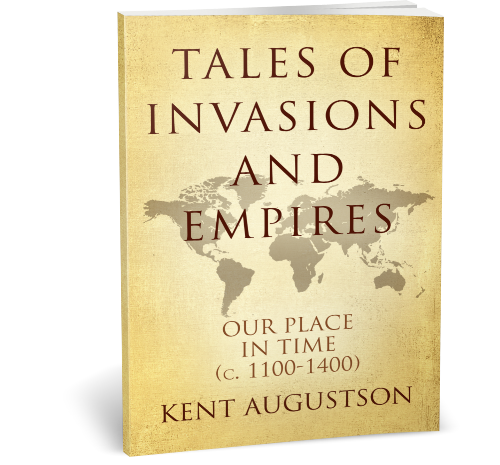
Our contention that it was in 1100 that the four major civilizations began to meaningfully interact is despite the fact that they had taken form centuries before.
- First as to Confucian China, we are with those who assert that, given the 460-year Period of Disunity following the Han dynasty (206 BC-AD 220), it was with the Tang dynasty (618-907) that Confucian China truly took hold.
- Second, although India’s Hinduism arguably goes back centuries before, today’s civilization is largely the consequence of its Gupta Empire (320-550).
- In the Middle East, the formation of the Islamic world initiated directly after the death of Muhammad when the Rashidun Caliphate (632-661) began a very aggressive expansion of the faith.
- Lastly, came the Christian West during the Carolingian dynasty with the crowning of Charlemagne by Pope Leo III as the first Holy Roman Emperor on Christmas Day, 800.
Although certainly aware of one another, before 1100 there were only two interactions of consequence, and these were over three centuries before.
- In 711, Muslim armies crossed the Strait of Gibraltar, laid waste to the Christian Visogothic Kingdom on the Iberian Peninsula, and charged north of the Pyrenees until rebuffed by the Frank’s Charles Martel (Charlemagne’s grandfather) at Tours in 732. Islam held on to rule over the Iberian Peninsula.
- The other was the Battle of Talas (751) in Central Asia between the armies of Islam’s new Abbasid Caliphate and that of China’s Tang dynasty that ended the latter’s westward expansion.
With this context in mind, Tales of Invasions and Empires, the first book in our trilogy, covers the three hundred years from 1100-1400. It began with invasions and was certainly a time of empire building.
Herein are seventeen interwoven tales of the four civilizations capturing memorable scenes, situations, and personalities. These stories are supported by twenty-two clarifying charts and fifteen illuminating maps and images. Here is a teaser of some of the fascinating people and fateful events you will encounter:
- A courageous, comely countess who championed a sainted pope and prepared Florence to lead the Renaissance.
- The humiliation of China and the ugly, ferocious peasant who brought back her glory.
- A stunning royal lady, a queen to two eminent kings, and the godmother of Western Europe.
- Two heroic and honorable warriors still venerated in their land to this day.
- A battle lost to one adored today that sealed the fate of India for 700 years.
- The ruthless warlord of the ages who yet wrought wonders touching today.
- An awful king and n august king who set their nation on course for an historic collision.
- The near annihilation of Islam and the dreamer who saw her future.
- A heralding, consummate poet of hell-fire images, but first of love.
- An elegant Indian empire too much forgotten that was a bridge to today.
- A brutal cold and a fearsome plague that ravaged a century but cleared a path.
- History’s most merciless conqueror whose image we can hold in our hands today.
Connections with today are stressed throughout; the final chapter examines 20 specific connections.


